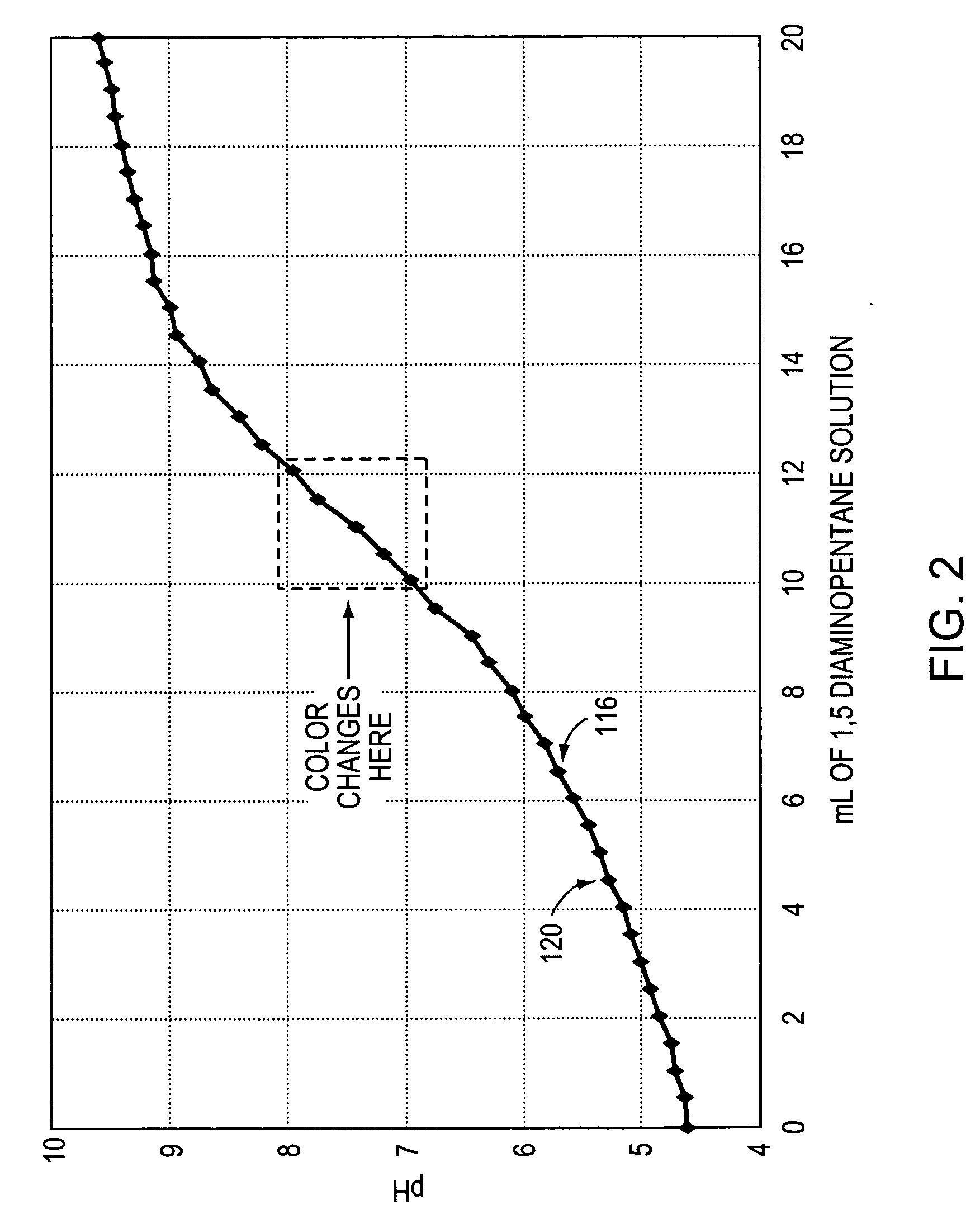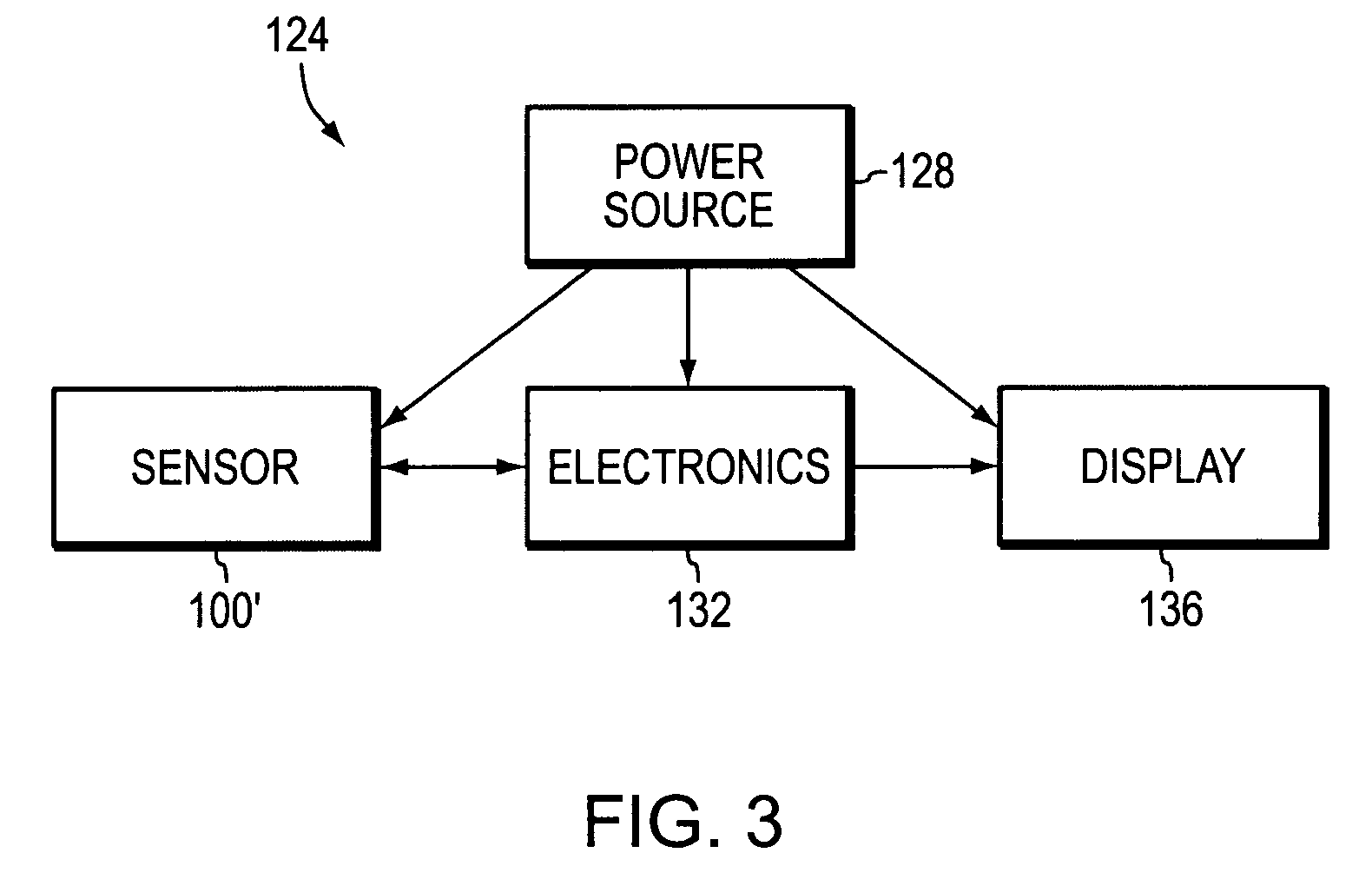Food and beverage quality sensor
a sensor and food technology, applied in the field of food and beverage sensors, can solve the problems of many food products being subject to spoilage, ageing and spoiling prematurely, and affecting the specificity of food products, and achieve the effect of facilitating specificity
- Summary
- Abstract
- Description
- Claims
- Application Information
AI Technical Summary
Benefits of technology
Problems solved by technology
Method used
Image
Examples
Embodiment Construction
[0024] With respect to FIG. 1, a sensor 100 according to the invention includes a detection material 104 that has an inherent sensitivity to a contaminant 108, i.e., exposure of the detection material to a threshold concentration of the contaminant 108 causes a property of the detection material to undergo a change. To alter this inherent sensitivity—that is, to render the detection material 104 more or less sensitive to the contaminant 108—the detection material 104 is exposed to a modulating agent 112.
[0025] For example, to enhance the inherent sensitivity, the detection material 104 may be exposed to (e.g., titrated with) a sufficient amount of the modulating agent 112 to cause the detection material to approach a point of onset of the property change. In this way, even a small concentration of the contaminant 108 will cause the detection material 104 to undergo the property change and thereby indicate the presence of the contaminant 108. Alternatively, the modulating agent may ...
PUM
 Login to View More
Login to View More Abstract
Description
Claims
Application Information
 Login to View More
Login to View More - R&D
- Intellectual Property
- Life Sciences
- Materials
- Tech Scout
- Unparalleled Data Quality
- Higher Quality Content
- 60% Fewer Hallucinations
Browse by: Latest US Patents, China's latest patents, Technical Efficacy Thesaurus, Application Domain, Technology Topic, Popular Technical Reports.
© 2025 PatSnap. All rights reserved.Legal|Privacy policy|Modern Slavery Act Transparency Statement|Sitemap|About US| Contact US: help@patsnap.com



